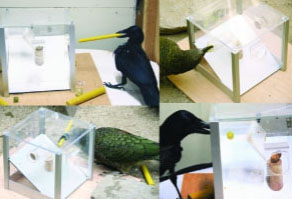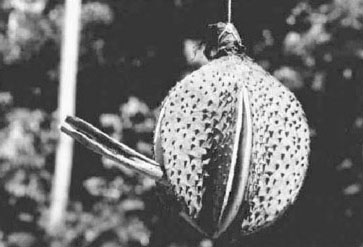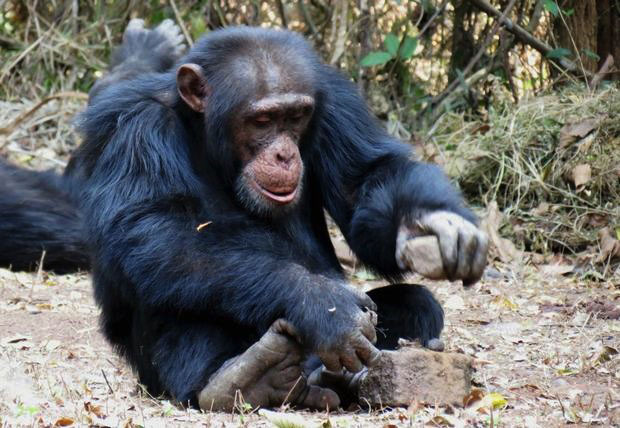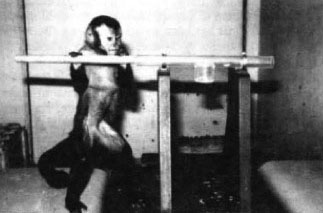Cross-Species Tool Use
Biology 342 Fall 2015
Jasmine Huang & Lauren Vanderhooft
Mechanism
Neurological mechanisms of tool use
Neurologically, animals that are generally predisposed to tool use, such as corvids and primates, show greater encephalization quotients and forebrain and neocortex size (see Phylogeny for more information).
In birds, the cerebellum size is associated with frequency of tool use, while it is the neocortex in primates that predicts the frequency of tool use (Emery & Clayton, 2009). In non-primate mammals, the overall brain size and specifically cerebral cortex volume predict tool-using behavioral flexibility in variable environments, as in brown bears (Deecke, 2012) and elephants (Hart, Hart, McCoy, & Sarath, 2001). Finally, complex motor networks allow for fine motoric movements that are required for many types of tool use (Emery & Clayton, 2009).
Morphological mechanisms of tool use
Morphologically, the physical capacities to use tools varies almost as much as the animals that engage in tool use. Animals with appendages that have strong motoric neural representations are well disposed to engage in tool use, such as elephants (Hart et al., 2001), primates (Biro, Inoue-Nakamura, Tonooka, Yamakoshi, Sousu, & Matsuzawa, 2003), corvids (Emery & Clayton, 2009), and octopi (Finn, Tregenza, & Norman, 2009).
Even within a class of animals, certain species are better equipped with morphological features than others when engaging in tool use, such as the comparison in beaks between New Caledonian crows and kea parrots (Auersperg, Von Bayern, Gajdon, Huber, & Kacelnik, 2011). Crows have medium-sized, straight beaks that work well with using sticks, while keas have large, curved beaks that work well for cracking open seeds; even with the large, curved beak that is not well-suited to tool use, the keas are still able to demonstrate considerable tool using behaviors (Auersperg et al., 2011).

This puzzle box has been used to demonstrate different strategies of using tools across different bird species. Here, the kea and crow show they can use the same tools (thin stick in the left images, ball in the right images), but they may use them differently due to morphological constraints. (Image from Auersperg, Gajdon, & von Bayern (2012), p. 143, Fig. 2.)
An instance of sexually dimorphic tool using within the same species is in Burmese long-tailed macaques, in which females use tools more often during bouts of feeding than males do (a behavioral distinction) and males use tools that are larger than females due to the larger size of males (an anatomical distinction) (Gumert, Hoong, & Malaivijitnond, 2011).
Surprising instances of tool use arise in animals that seem to not need to use tools due to strong morphological features, as in the keas (Auersperg et al., 2011). Another example of an animal with strong morphological features that seems to outcompete the need for tool use are orangutans, which have strong hands and jaws for foraging, but have also been found to use unmodified tools or “found objects” (Fox, Sitompul, & Van Schaik, 1999).

Though orangutans are not typically thought of first when thinking about tool-using animals, some studies has shown that orangutans have found original ways to optimize their foraging, such as in this image when an orangutan used a stick to open a hard fruit shell. (Image from Fox, Sitompul, & van Schaik (1999), p. 103, Fig. 4.1.)
Cognitive mechanisms of tool use
Cognitively, animals often require engaging in a variety of mental processes to use tools, such as prospective memory (Emery & Clayton, 2009; Finn et al., 2009), motivation (for neophilia/neophobia, see Auersperg et al., 2011; for delay to gratification, see Emery & Clayton, 2009, Hart et al., 2001, and Visalberghi & Limongelli, 1994), and problem solving (Auersperg et al., 2011; Visalberghi & Limongelli, 1994).
Memory
Animals have been shown to collect tools that they can use in the future, a form of prospective memory (Emery & Clayton, 2009). For example, octopi only use and assemble coconut shells to protect themselves only when necessary or when the shells will be needed in the foreseeable future (Finn et al., 2009). They also collect multiple tools that can be used sequentially (meta-tool use) or concurrently (tool kit).
Chimpanzees can collect multiple tools to crack nuts, such as an anvil, stones, and a “hammer” (Biro et al., 2003).

This chimp is using a stone as a hammer to break open a nut. The ape is also using a hard surface to stabilize the nut and increase the likelihood of successfully crackin it open. (Image from Science 20.)
Motivation
The ability to collect tools or combine tools to achieve a better reinforcer than an organism could obtain without tools also requires delay of gratification (Emery & Clayton, 2009). A failure of this cognitive process is well cited in capuchin monkeys, which are unable to physically remove themselves from the immediate reinforcer in order to obtain that reinforcer, such as when they need to push a candy away from themselves with a stick to avoid trapping it in a lab tool task (Visalberghi & Limongelli, 1994).
Elephants can successfully engage in delaying gratification, as when they modify branches to swat flies efficiently rather than forage without a switch (i.e., fly swatter) (Hart et al., 2001).
Motivation also encompasses reinforcing properties, as when Eurasian jays are reinforced to use pebbles to displace water in a tube, which raises a floating worm towards them (Cheke, Bird, & Clayton, 2010).

The capuchin’s task is to use the stick to obtain a food reinforcer in the tube without pushing the treat in the trab at the bottom of the tube. Success in the task requires the subject to push the food away from the monkey from the correct direction so as not to push it into the trap. This capuchin was able to solve the trap-tube task with experience. When control conditions were conducted, the monkey did not demonstrate causal reasoning as it responded as if the trap in the bottom of the tube were still present even when the trap was on top, making it impossible for the food to be trapped. (Image from Visalberghi & Limongelli (1994), p. 16, Fig. 1.)
Problem solving
The New Caledonian crow and kea puzzle box task is a great example of tool use problem solving. This task utilized multiple tools (thin and thick sticks, a marble, a string, a door) to demonstrate crows’ predisposition for tool use and problem solving skills and possible evolutionary similarities between crows and keas (Auersperg et al., 2011).
New Caledonian crows have also been used in other tool and problem solving tasks in which the crows were challenged to pick a functional string to pull in a reinforcer (non-functional strings had a cut in them so they would not pull in the reinforcer) (Taylor, Knaebe, & Gray, 2012).
Again, capuchins appear to fail at problem solving tool tasks, such that capuchins with greater experience with the tool task were less likely to perform flexible tool use behavior to achieve the desired outcome; in control tasks that did not require cautious behaviors (i.e., no trap present to trap the food reinforcer), capuchins responded as if a trap was still present (Visalberghi & Limongelli, 1994). This overgeneralization across contexts is not indicative of causal reasoning or flexible problem solving, but the capuchins are still able to use tools without these cognitive capacities in this context.
The New Caledonian crow and kea puzzle box task by Auersperg et al., 2011. Performance in this task demonstrates differential strategies in using the tools for keas and crows, as well as the ease with which the tools are used to solve the problem. While the two bird species perform differently, it is interesting that both birds are capable of using all of the provided tools despite different morphologies. (Video from The Nature Box on YouTube.)
Behavioral mechanisms of tool use
Behaviorally, some animals use social learning to learn how to use tools. The ability to learn by observation allows animals to transfer information quickly and efficiently about tool use (see Ontogeny for more information).
For example, wild groups of orangutans with social contact increases the chance of social transmission of tool use and increases the competition between animals to encourage efficient tool use in foraging patches (Fox et al., 1999). Dolphins also use matrilineal social transmission in sponge tool use to forage and protect their rostrums, such that there is high relatedness in dolphins that engage in this behavior (Krützen, Mann, Heithaus, Connor, Bejder, & Sherwin, 2005).